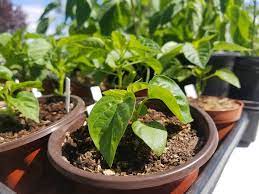
Apartment Vegetable Garden: 7 Information Before Setting Up One
With the high price of homes, more and more people are living in apartments, foregoing their dream of owning a spacious backyard and a large garden.However, it is still possible for apartment owners to have a good sized garden right in their very own apartments, lack of space is no hindrance for having a garden.
Growing your own fruits and vegetables saves you money and it also assures that the fruits and vegetables you eat are healthy.
Below are a few information which might help you in setting up your own apartment vegetable garden:
Note: This research was based on the top searches on Google for apartment vegetable garden.
7 Information Before Setting Up One:
1. Apartment Vegetable Garden Statistics2. Planting in Apartment
3. Grow Food in Apartment
4. Apartment Vegetable Garden
5. Vegetables You can Grow in an Apartment
6. Grow Tomatoes Inside Apartment
7. Apartment Balcony Vegetable Garden
Final Words
The Details:
1. Apartment Vegetable Garden Statistic
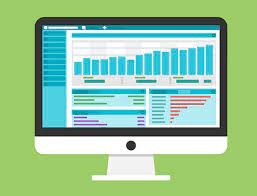 - 35% of US households grow vegetables, fruits, and other food.
- 35% of US households grow vegetables, fruits, and other food.
- Top 10 homegrown vegetables:
86% Tomatoes
47% Cucumbers
46% Sweet Peppers
39% Beans
34% Carrots
32% Onions
32% Summer Squash
31% Hot Peppers
28% Lettuce
24% Peas
- Of US households planting, 91.2% are homeowners.
- 51.40% plant vegetables and 18% plant fruit trees. - At least 37.6 million US homes contain at least one indoor plant.
- In urban centers like New York, upwards of 11% of growers in these areas have some or all of their veggies and herbs growing indoors.
- A gardener earns $1 per square foot.
- A 200 square foot garden can feed one person.
Sources:
Gabion Reviews
- Garden Pals
- Ruby Home
Back To Summary List
2. Planting in Apartment
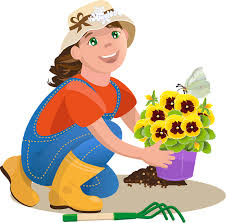 You can grow plants even if you live in a tiny apartment. More importantly, if you plan to be self-sufficient on food, certain herbs, fruits and vegetables can grow in an apartment setting.
You can grow plants even if you live in a tiny apartment. More importantly, if you plan to be self-sufficient on food, certain herbs, fruits and vegetables can grow in an apartment setting.
You can even use excess containers in your home as plant pots. However, growing plants in your apartment is way different from growing plants on open land.
For example, You need to consider your plant’s access to sunlight and the weight of your containers.
Here are a few things you should consider if you’re growing plants in your apartment:
1. Sunlight:
Most fruiting and flowering plants need six to eight hours of direct sunshine a day. Most apartments only have access to sunshine from their few windows and their balcony, if they even have one.
If you’re lucky, you might live in an apartment building where there is rooftop facilities. But this means sharing your plants with the other occupants of the apartment building.
If you’re gardening on windowsills, choose plants that require less sunlight like certain greens and herbs. Additionally, you can use a Grow Light to mimic sunshine.
2. Water:
Choose a place in your apartment which is reasonably insulated for water spills especially if you are living in the upper floors of your apartment building. Water spills can damage not only your apartment but the other apartments below you.
Plants in containers always need to be watered, often multiple times a day. Choose a spot in your apartment where watering your plants won’t be much of a burden such as your balcony.
2. Soil:
Soil provides the nutrients in plants. Since you’re living in an apartment which is either made up of concrete or wood, you would likely put your plants in containers which requires a more nutrient rich soil composition which you could buy at gardening shops.
Store bought soil would likely be more clean, which means it is relatively free of diseases and pests which might spread into your apartment.
3. Humidity:
This can be a problem if you are growing your plants on an indoor windowsill and more especially in places in your apartment that are closed off from the outside weather. This is especially important if the temperature is hot.
You can spritz your plants with a fine mist or you can place your plants on a tray of water to keep them from drying up.
4. Wind:
Since your plants would be in containers, they’ll likely topple under strong winds. Make sure that your plants have braces and their containers are wide and heavy enough to not topple.
5. Weight:
Containers can become very heavy with soil and especially with added water. Make sure the place where you put your plants is sturdy enough to hold them, this is especially true of wooden floors and elevated structures.
Window boxes will need to be secured to the windowsill. Your falling plant container full of soil can seriously hurt anyone it hits and you’ll be liable not only for court damages but medical bills as well.
Back To Summary List
3. Grow Food in Apartment
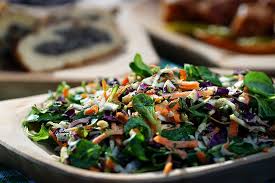 As the statistics show, 35% of US households grow vegetables, fruits, and other food in their homes. Also, 51.40% plant vegetables and 18% plant fruit trees.
As the statistics show, 35% of US households grow vegetables, fruits, and other food in their homes. Also, 51.40% plant vegetables and 18% plant fruit trees.
According to statistics also, it takes about 200 square foot of garden to feed one person. The average apartment size in the US is 540 square foot.
This means that an average apartment once partially fitted with an apartment garden can feed one of its occupants.
There are also people who have converted one of their apartment rooms into an indoor mushroom garden. The mushroom industry alone in 2022 is worth USD 54.9 billion and is growing at a very fast rate of 9.7% per year.
This means that growing food in your tiny apartment is not only possible but can even be profitable.
Back To Summary List
4. Apartment Vegetable Garden
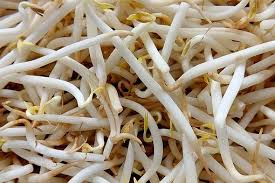 Food experts advise that half of our meals be composed of fruits and vegetables with 2/3 of this being vegetables.
Food experts advise that half of our meals be composed of fruits and vegetables with 2/3 of this being vegetables.
This is why you should plant more vegetables in your apartment garden instead of non-essential plants.
It is also to be noted that as of 2023, global prices of vegetables have been soaring so much that there are countries who have banned the export of their vegetables.
Onion prices have especially skyrocketed because it is one of the most used vegetable globally.
As you can see, you could save money by planting your own vegetables. You can even plant the vegetables scraps you use in your food preparation. You don’t even need to buy seeds for planting.
Back To Summary List
5. Vegetables You can Grow in an Apartment
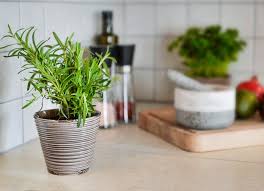 You can grow just about any fruit and vegetable in a container to a certain extent. But there are varieties that can easily fit in a one-square-foot corner of your balcony.
You can grow just about any fruit and vegetable in a container to a certain extent. But there are varieties that can easily fit in a one-square-foot corner of your balcony.
Think about the fruits and vegetables you enjoy eating and then try to grow them in your apartment garden.
You can even plant the fruit and vegetables scraps and seeds you use in your food preparation. You don’t even need to buy seeds for planting.
Here are a few fruits and vegetables you can ideally plant in your apartment garden:
1. Herbs:
Many herbs grow well in containers but they won't grow as large and bushy as they would outdoors in the ground.
Herbs are used for cooking which many people do several times a day. This is their importance to your apartment garden.
The best herbs to plant in apartment garden would include basil, chives, lavender, mint, parsley and thyme.
2. Salad greens:
Arugula, lettuce and spinach are fast-growing, shallow-rooted plants which are salad favorites because they’re delicious. They’re also easy to grow and need only plenty of water. This makes them ideal for your apartment garden.
3. Tomatoes:
Tomato plants grow well in pots even though they grow large and heavy. The larger is your container, the better.
There are even varieties that you can place in a hanging basket. Make sure you choose a dwarf or determinate variety of tomato.
4. Carrots:
They are root vegetables so you need a deep container because they grow down. They are simple to grow. All you need is to keep them in room temperature at 60 degrees Fahrenheit.
They will also need about 6 to 8 hours a day of sunlight. You can use Grow Lights to help them along.
5. Celery:
It takes about 120 days for a celery seed to grow enough to be harvested. But you could also immerse castoff celery plants in water for 5 to 7 seven days until leaves start to grow out of the top roots sprout from the base.
All you have to do next is to plant it in soil loosely covering the roots. To harvest the plant but keep it alive, just break a few stalks off for eating, leaving the rest of the plant to live.
6. Potatoes and Sweet Potatoes
To grow potatoes, you need another potato. Take one potato and cut it up in chunks. You can immerse the potato chunks in water or bury them outright in soil. It takes between 1 to 2 months for potatoes to grow depending on the variety.
There are actually potato-growing sacks being sold with flaps at the bottom for easier harvesting. However, they are so easy to do, you can easily make one yourself.
When the potato foliage turns yellow, it means that the potatoes are almost ready for harvesting.
7. Radishes:
They grow fast needing only 30 to 40 days to be ready for harvesting. This makes them ideal for supplementing some of your meals.
All you need to do is to plant the seeds under half an inch of soil in a container with at least 8 inches of soil in it. Then water it every day.
8. Kale:
It is easy to grow provided you don’t expose it to extreme temperatures. It grows all year round provided you water it sufficiently and give it direct sunlight.
Kale sprouts become ready in a couple of weeks. The plants take about 2 months to reach maturity.
9. Scallions:
They are very easy to grow. Take the white end of scallion scraps and submerge the roots in water. Remember to change the water every few days. After about a week, you can plant it.
Once it grows, you can cut the fresh ends and use it for your meals. You can use scallion flowers for salads as well.
10. Chili peppers:
If you like spicy food then you should definitely plant hot peppers. They also grow very well in pots and they bear fruits year-round. You can also grow sweet peppers in containers, but they typically don't grow as well as hot peppers.
11. Meyer lemons:
Though not strictly a vegetable but a fruit, you can grow them much like vegetables. They are some of the easiest fruits to grow in containers. They just need to be exposed to some humidity and sunlight for 6 to 8 hours a day.
12. Strawberries:
Another fruit and not vegetable, strawberry plants need at least six hours of sun per day and consistently moist but not soggy soil.
Back To Summary List
6. Grow tomatoes inside apartment
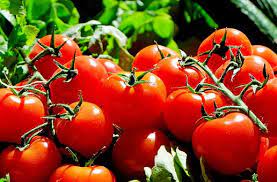 According to popular online searches, if there’s a plant that people are interested in planting, it’s the tomato.
According to popular online searches, if there’s a plant that people are interested in planting, it’s the tomato.
The placement of your tomato plant is very important. It won’t effectively grow indoors unless the conditions are like those of an outdoor garden.
According to Google: "The plants need a good eight hours of sunlight per day and a surrounding temperature of around 70 degrees Fahrenheit or higher. Consider a spot on a window sill or near a screen door."
Back To Summary List
7. Apartment Balcony Vegetable Garden
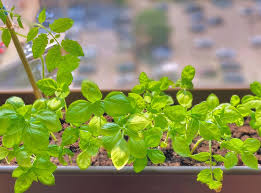 Choosing the right plants for your balcony garden takes a bit more thought than you would a standard garden. The vegetables you plant in your balcony garden must be of the right size for space considerations.
Choosing the right plants for your balcony garden takes a bit more thought than you would a standard garden. The vegetables you plant in your balcony garden must be of the right size for space considerations.
This also means that the vegetables you select must be weather resistant. This means they can withstand the excess or lack of sunlight as well as the force of the wind and all the other varying weather conditions.
Sunlight:
You should know how much sunlight your balcony gets from season to season and if possible from day to day so you would know which vegetables to grow.
There are fruits and vegetables that are sensitive to the amount of sunlight they get. These plants and vegetable need for example, at least six hours of sunshine: cucumbers, melons, okra, squash, strawberries and tomatoes.
These fruits and vegetable thrive with 4 to 6 hours of sunlight or “partial shade”: beets, small carrots, cauliflowers, chard, onions, peas, radishes and root crops.
These fruits and vegetables thrive with less than 3 hours of sunlight or “full shade”: herbs like cilantro, garlic, green onions, lemon balm, mint and so on, and salad or leafy greens like bok choy.
Plant Size:
Apartment and especially their balconies are usually cramped. This is why you should choose fruits and vegetable plants that don’t grow too big.
Corn, squash and tomato plants for example grow to large sizes. However, there are dwarf tomato plants that don’t grow so much but you would have to content yourself with smaller fruits.
If your problem is floor space, you can choose plants that grow vertically instead. Cucumbers, peas and pole beans are good vertical growers. But remember that there are fruits and vegetables that grow up to 5 feet.
Here are some other vegetables that are ideal for your balcony:
Bok Choy
Basil (needs a sunny spot)
Chives
Cilantro (needs a cool spot)
Green beans
Lemon Thyme
Mint
Parsley
Peppers
Purple Kale
Radishes
Rainbow Chard
Speckled Lettuce
Containers:
Avoid using containers that will be much smaller than the adult plants. Research how big a fruit or vegetable plant gets before choosing a container for it.
Smaller containers also dry out much faster. This is very important if you live in a dry area. You might have to water your plants several times a day to keep them from drying.
Tip: Tomato plants are notorious for growing large, so put the in 5 to 10 gallon containers and much larger. If you are restricted for space, grow a dwarf tomato plant instead.
Some
Here are some fruit and vegetables that don’t require large containers: broccoli, cabbage, cauliflower, eggplants and small peppers.
You can also put two or more fruit and vegetable plant in the same container. But you need to space them accordingly such that they don’t crowd the container and don’t steal each other’s sunlight.
Vine vegetables like squash and zucchini, need containers that have thick or curved edges so that the plant can hangover without getting damaged. You can use a small piece of trellis to support them at an angle as they hang towards the ground.
Soil:
Plants need soil to survive. A good quality soil would produce high quality plants as well.
Although you can use ordinary soil for your fruits and vegetable plants, make sure that the soil you are using is from an area where plants are already growing healthy. This is your best indicator of good soil.
If you are living in an urban area where soil is scarce, you can buy soil from gardening shops. But don’t buy the cheapest one, make sure that you are buying the right soil for your particular plant type.
Fruit and vegetable plants especially need special potting mixes to keep them healthy. Potting mix is lighter in weight which makes them ideal for balconies.
They also contain perlite or vermiculite which helps the roots of your fruit and vegetable plants to get the air and drainage they need.
Many soils especially designed for containers already contain fertilizer or another form of plant food. This may be in the form of: compost, organic materials or it might be slow-release fertilizer pellets.
If your fruits and vegetables are not growing healthy, you may add fertilizer but don’t overdo it as it may end up harming your fruits and vegetables instead.
Back To Summary List
Final Words
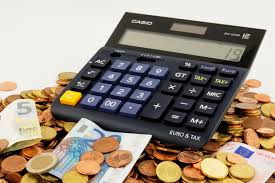 With fruit and vegetable prices rising most especially vegetables, maybe it’s time you don’t become too dependent on fruit and vegetable sellers.
With fruit and vegetable prices rising most especially vegetables, maybe it’s time you don’t become too dependent on fruit and vegetable sellers.
Also, by growing your own fruit and vegetables, you are assured that the fruits and vegetables you eat are planted in a healthy way unlike store bought fruit and vegetables which might be tainted with harmful substances.
As statistics have shown, a 200 square foot garden is enough to feed a single person. Even if you don’t meet this size, you can at least minimize your dependence from fruit and vegetable sellers.
Back To Summary List
You Might Be Interested To Read This Article:
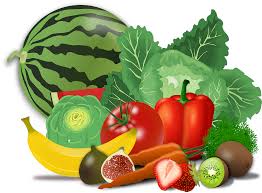
How Can You Profit From Vegetable, Herb and Fruit Scraps?
According to the food experts at finedininglovers.com, a culinary website: 50% of fruit and vegetables are wasted every year, and up to one-third of vegetables could be wasted in the preparation process alone ...